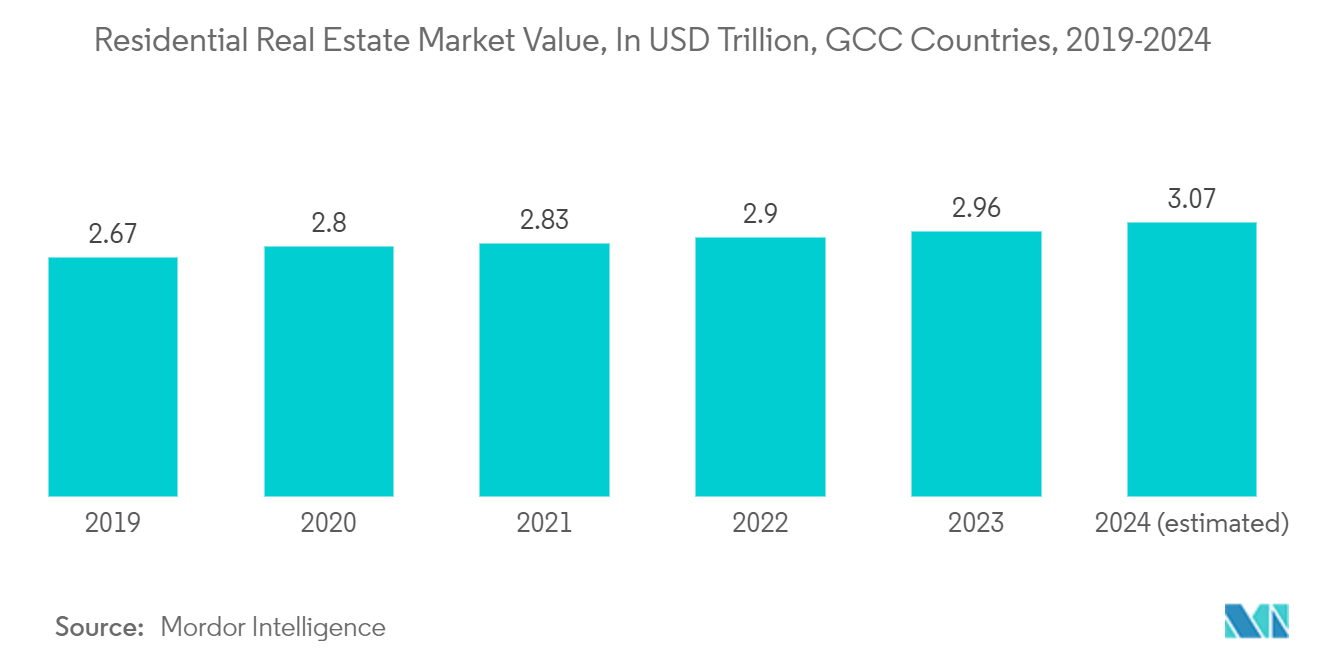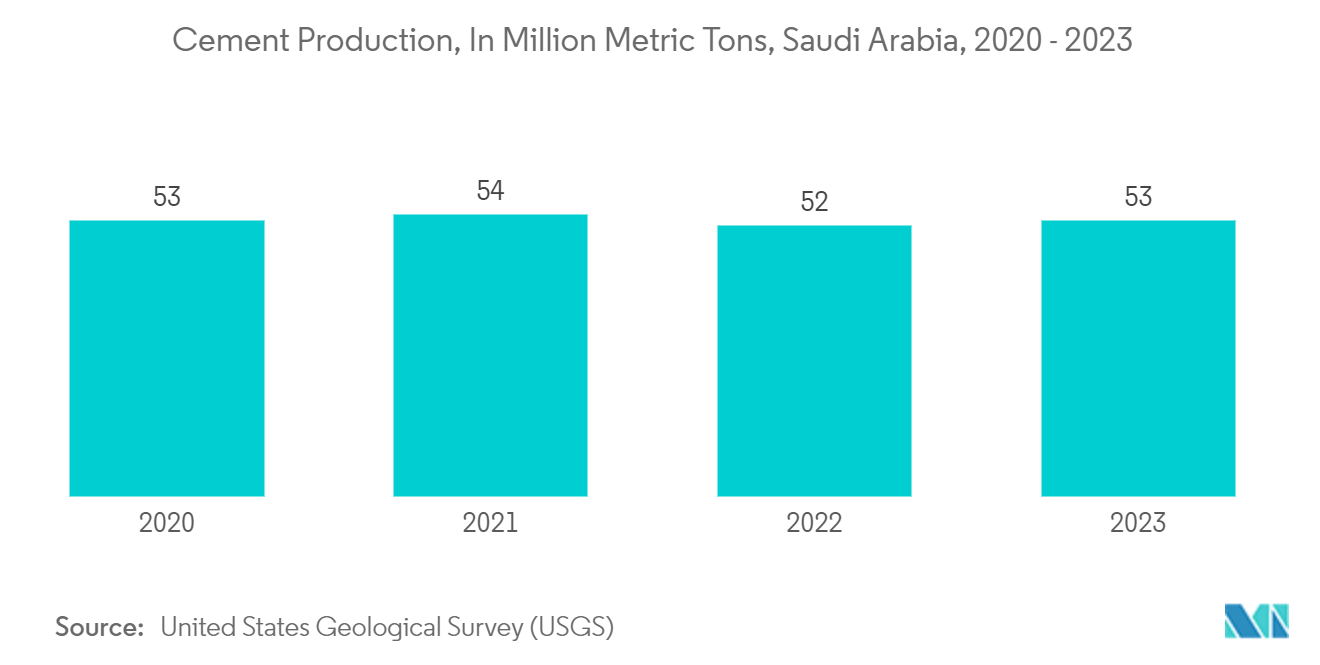Market Trends of GCC Cement Industry
Residential Construction Application to Dominate the Market
- The residential sector is one of the most significant cement demand sectors. The market studied will likely be driven by increased construction of new residential buildings as middle-class disposable income rises.
- Cement is becoming more popular in the residential sector due to increased building standards and legislation regulating energy-efficient structures.
- Residential construction accounts for a significant share of the overall construction sector in the region. Saudi Arabia and the United Arab Emirates are the leading residential construction markets in the area, with significant ongoing residential construction projects.
- In Saudi Arabia, the USD 8,000 million worth of Kind Salman Park In Riyadh includes 12,000 units of residential facilities along with hotels, commercial complexes, and others.
- Amaala: The Riviera Of The Middle East project worth USD 6 billion is another ongoing construction project in Saudi Arabia that includes the construction of 943 residential villas and is expected to be completed by 2027.
- Qiddiya City In Riyadh is a USD 5 billion project that includes constructing 11,000 residential units and is expected to be fully completed by 2030.
- Owing to all these factors, the cement market will likely grow during the forecast period.

Saudi Arabia to Dominate the Market
- Saudi Arabia is the region's largest country and construction market.
- The country is the largest cement producer in the region. The country is home to some of the largest cement manufacturing companies in the region.
- The construction industry contributes nearly 6-7% of the country's GDP. Saudi Arabia’s Vision 2030 aims to bring change by focusing on sustainability commitments, improving the quality of life for citizens, and building a thriving economy in the country. The announcement of Vision 2030 and the associated National Transformation Plan (NTP) have increased investments in various sectors, such as healthcare, education, and infrastructure.
- Under its Budget 2023, the Saudi government announced a SAR 34 billion (~USD 9.06 billion) expenditure for its infrastructure and transportation sector. The country has also launched various Giga project programs, the most extensive civil infrastructure engineering program in the world, covering industrial, residential, and tourism development development.
- The investments in Saudi Arabia’s real estate and infrastructure projects crossed the USD 1 trillion mark in 2023. In 2016, they reached USD 1.1 trillion since the ‘National Transformation Plan’ launch.
- In June 2022, the country launched 93 projects to upgrade its utility infrastructure. These projects, which will cost SAR 8.5 billion, will support water and environmental sustainability and improve the operational efficiency of waterway transportation and distribution.
- The Saudi government works on various mega projects to boost infrastructure. This, in turn, would positively impact the cement market during the forecast period. For instance, the government is building a prime tourist destination named Amaala, which involves the construction of airports to cater to luxury travelers. The project's first phase is projected to be completed by the end of 2024 and consists of an investment of about USD 15 billion.
- Thus, all these factors are expected to propel the growth of the cement market during the forecast period.


